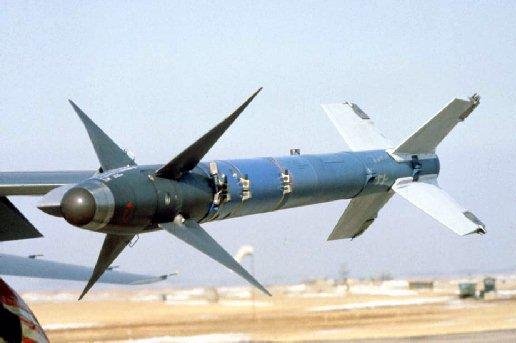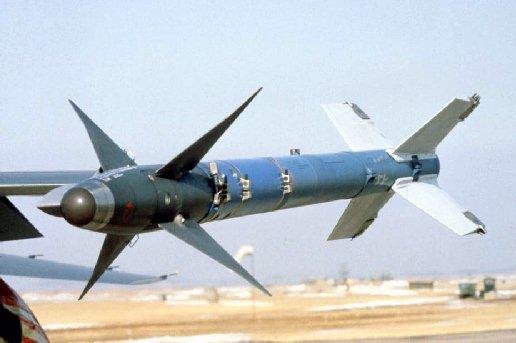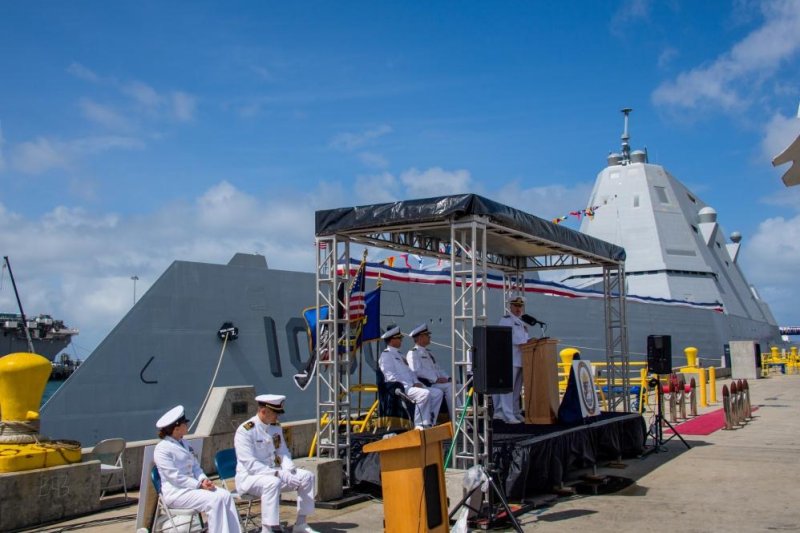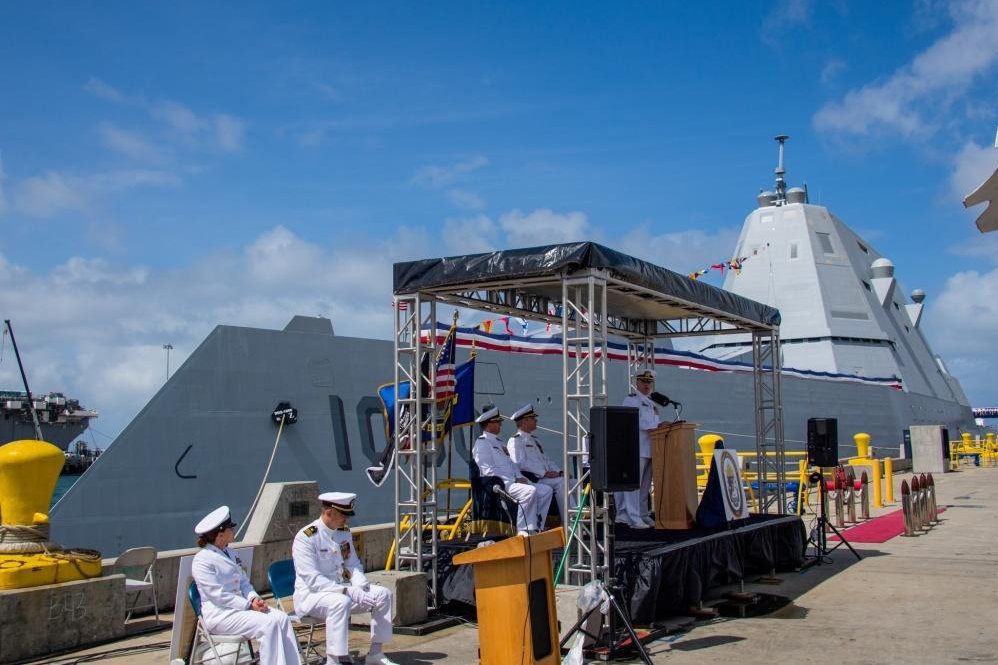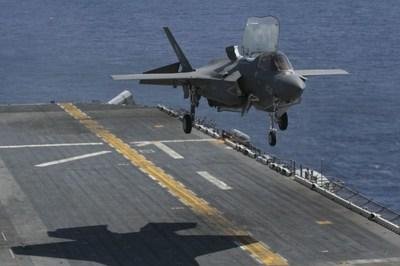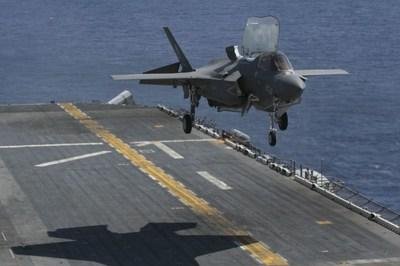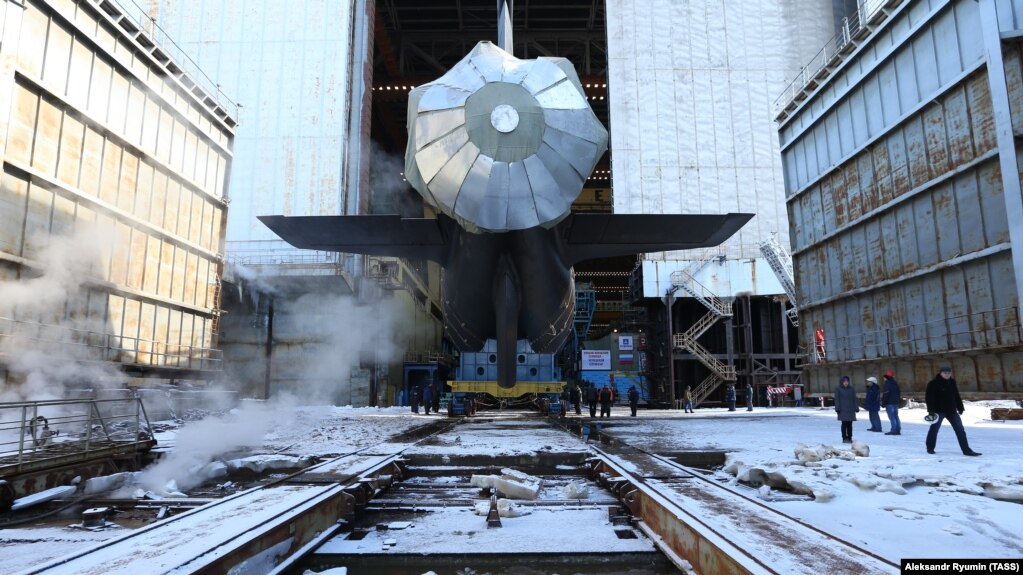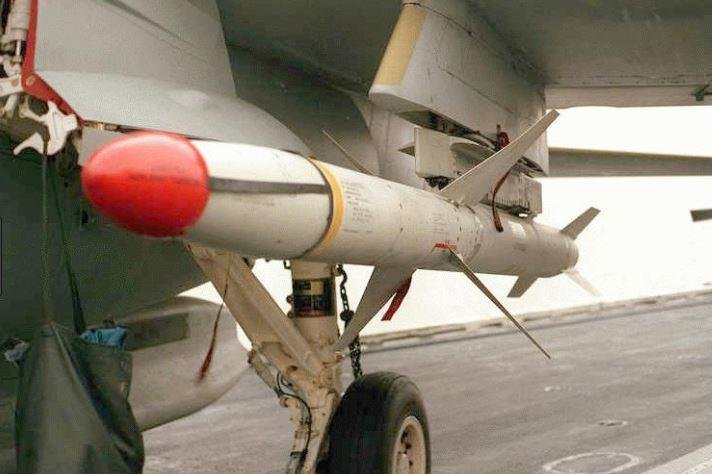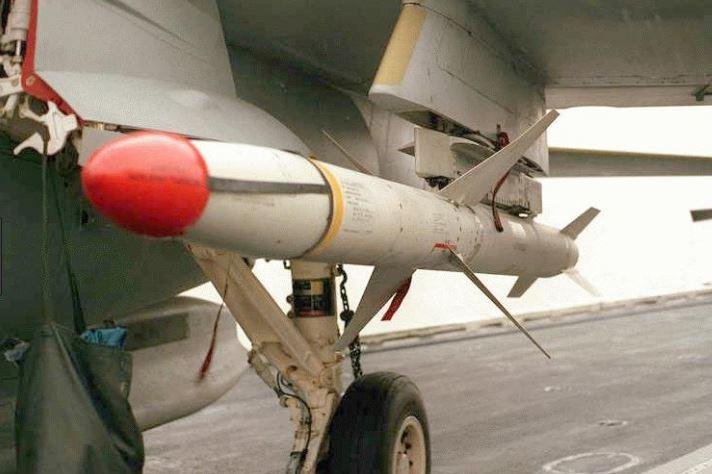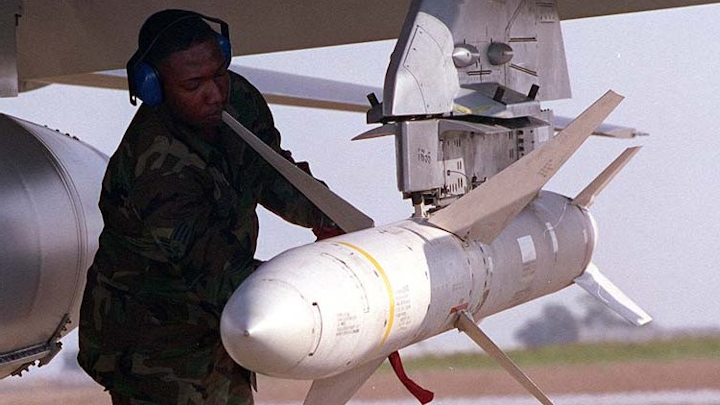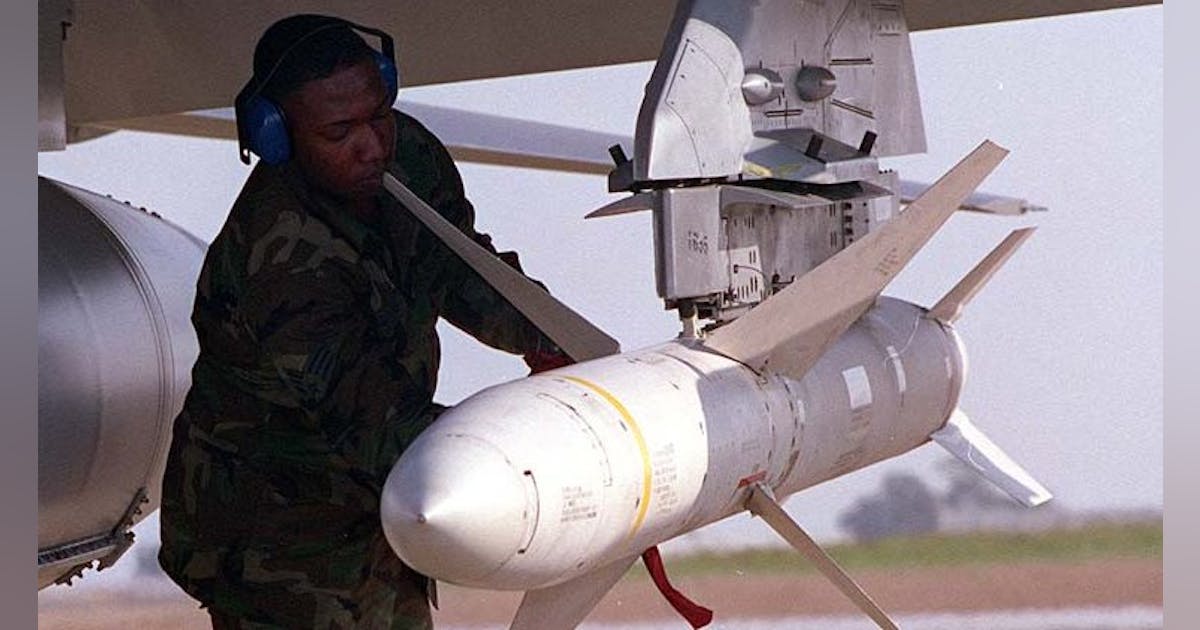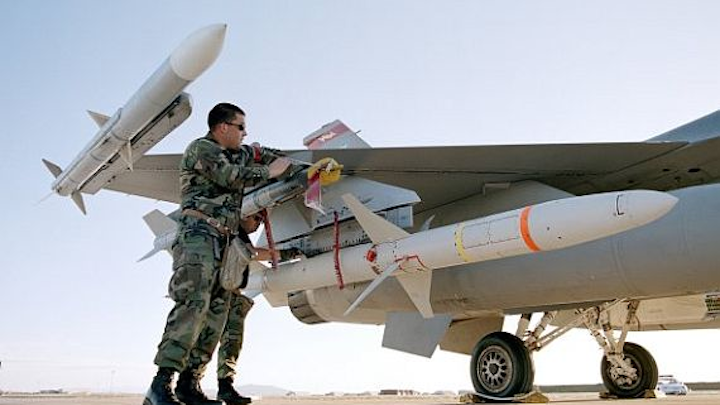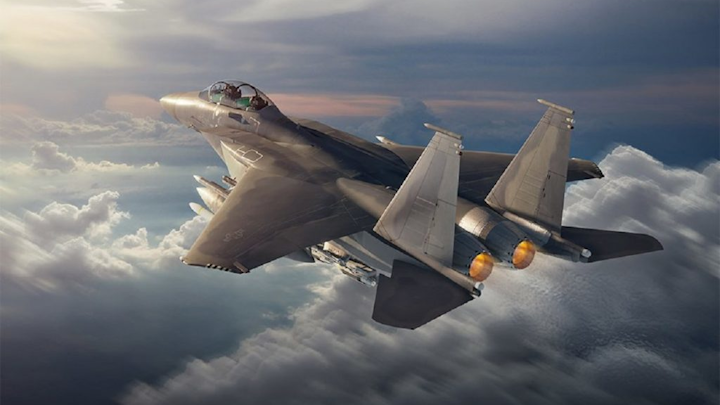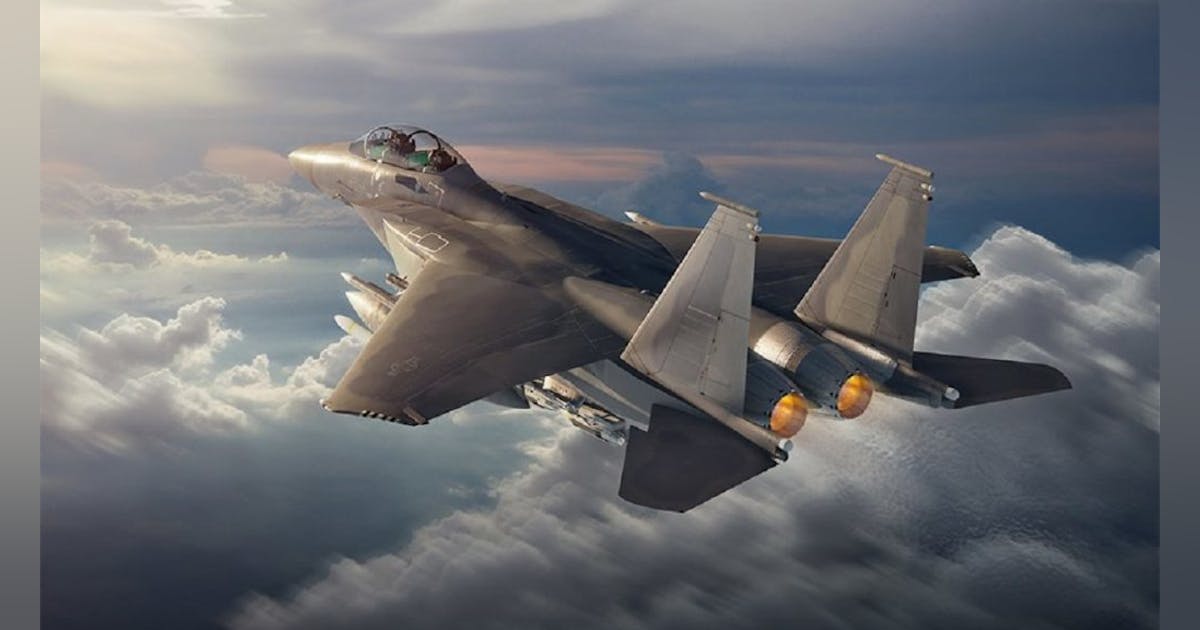Navy pushes shipboard unmanned systems, lethality upgrades
Shipboard electronics use to be about power, navigation, and communications aboard surface warships; now it’s about unmanned systems, futuristic weapons, and ocean networking.
Mar 1st, 2019
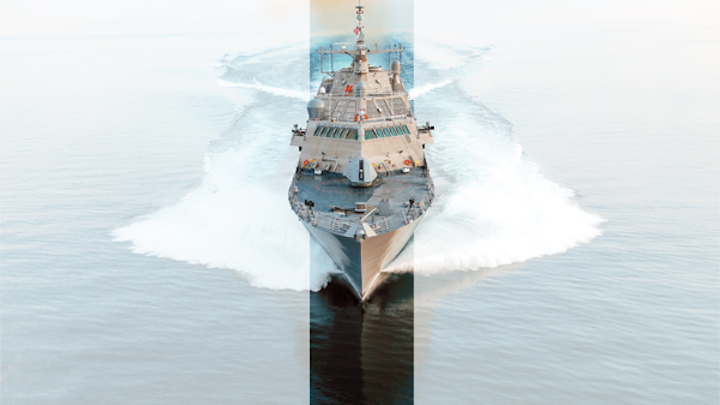
Shipboard electronics use to be about power, navigation, and communications aboard surface warships; now it’s about unmanned systems, futuristic weapons, and ocean networking.By Edward J. Walsh
The U.S. Navy in 2019 is facing growing threats in the Western Pacific, Southwest Asia, and the Eastern Mediterranean — even as the Trump administration seeks to reduce U.S. military commitments overseas. To confront increasingly aggressive naval activity by China and Russia, the Navy, with strong congressional support, is pushing to increase the size of its surface fleet to 355 ships. In early 2019 the fleet had about 290 deployable surface warships.
Last October former Australian Prime Minister Kevin Rudd declared that “China intends to push the U.S. out of East Asia and the Western Pacific, and intime to surpass the U.S. as the dominant global economic power.”
Speaking then at the New China Challenge conference hosted by the U.S. Naval Institute in Annapolis, Md., Rudd said that “China hopes to achieve its national and international dominance through the hollowing-out of U.S. domestic manufacturing and technology by means of state-directed industry ... through the rapid expansion of China’s military and naval presence from the East China Sea ... and across the littoral states of the Indian Ocean and Djibouti in the Red Sea.”
He added that “these factors, along with Russia, combine to form the central strategic challenge to U.S. security and prosperity for the future.”
Chief of Naval Operations Adm. John Richardson, in his White Paper “A Design for Maintaining Maritime Dominance 2.0,” released in December, points out that “China and Russia are deploying all elements of their national power to achieve their global ambitions. ... In many cases, they are gaining a competitive advantage and exploiting our vulnerabilities ... China and Russia seek to accumulate power at America’s expense.”
In January Richardson met with his Chinese navy counterpart Vice Adm. Shen Jinlong in Beijing to discuss ways of reducing tensions at sea — particularly China’s claim to the entire South China Sea.
The friendly relationship between the U.S. and Taiwan remains a sore point for China. The Pentagon has accused China of staging offensive weapons, including anti-ship and surface-to-air missiles, in and around the Spratly Islands, which China also claims. In 2018, citing tensions, the U.S. excluded the Chinese navy from participating in the biannual RIMPAC exercise. China did take part in 2014 and 2016.
The Navy announced the new 355-ship goal in December 2016 — a goal which the congressional fiscal year 2018 National Defense Authorization Act endorsed “as soon as practicable,” subject to available funding.
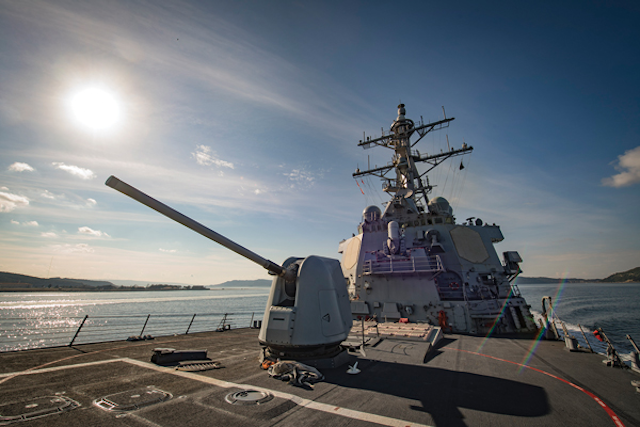
The Navy plans three Arleigh Burke class destroyers in its current budget, to be built to the new Flight III design.
Push for shipbuilding
The Navy’s 2019 budget would pay for 10 new ships: two Virginia-class attack submarines; three Arleigh Burke-class Aegis destroyers; one littoral combat ship (LCS); two oilers; one expeditionary sea base ship; and one salvage and rescue ship.
The current five-year shipbuilding plan seeks to build 54 new ships — 11 more than the 43 sought for fiscal year budgets 2019 to 2024 in the 2018 budget submission. These are four Burke-class destroyers, three oilers, two expeditionary sea base ships, one salvage-rescue ship, and one ocean surveillance ship.
The Navy has moved forward smartly on shipbuilding. In late September last year, it awarded a $5.1 billion contract to Huntington Ingalls Industries in Newport News, Va., for six Burke destroyers and a $3.9 billion contract to General Dynamics Bath Iron Works in Bath, Maine, for four more destroyers. These ships will be built to a Flight III design — a bow-to-stern package of new weapons and sensors, machinery controls, and hull, mechanical, and electrical upgrades.
These awards follow the long-anticipated Navy announcement that the first Flight III ships will be Jack H. Lucas (DDG-125) and Louis H. Wilson Jr. (DDG-126), to be built by Huntington Ingalls and Bath Iron Works respectively. Huntington won the Lucas contract in June 2017 and Bath Iron Works received the Wilson award in September of that year. Sixty-six Burkes of the earlier Flights I, II, and IIA designs now are in service. Patrick Gallagher (DDG-127), under construction at Bath Iron Works, will be a Flight IIA ship.
Last July the Navy awarded contract modifications — all in the $7 million to $8 million range — already awarded to Huntington Ingalls, Austal USA in Mobile, Ala., and General Dynamics Bath Iron Works; as well as the Lockheed Martin-Marinette Marine Corp. team in Marinette, Wis. — for concept designs for a new guided-missile frigate or FFG(X).
The Navy says the FFG(X) design work, to be completed this June, will guide final specifications to be used in the request for proposals for detail design and construction for the FFG(X). The Navy plans a construction award in 2020.
The FFG(X) program was initiated to counter widespread criticism that the Navy’s littoral combat ships are too lightly armed and vulnerable to enemy missiles. The littoral combat ships were conceived as light, high-speed ships that will use specialized mission packages to conduct anti-surface and anti-submarine warfare, and mine countermeasures.
Littoral combat ships
Lockheed Martin and Fincantieri Marinette Marine are teamed on the Freedom-class (LCS-1) variant of the LCS (odd hull numbers); Austal USA and Bath Iron Works build the Independence variant (LCS-2, even hull numbers). Thirteen littoral combat ships of both variants now are in service — six Freedom ships and seven Independence ships. Austal is building six littoral combat ships, with three more under contract. Seven Freedom-type ships are under construction at Fincantieri Marinette Marine.
The FFG(X) will be a well-armed, well-defended ship. In its request for information from industry in July 2017, the Navy cited many of the systems required, including the Component-Based Total-Ship System – 21st Century (COMBATSS-21) combat management system; SeaRAM anti-ship missile defense system; Mk 53 Nulka decoy launch system; SQS-62 variable-depth sonar; and Mk 110 57-millimeter gun.
Several new ships went to sea, started construction, and were placed on contract in the past year. The Navy commissioned Ralph Johnson (DDG-114) in Charleston, S.C., last March. Thomas Hudner (DDG-116), the 66th Burke-class ship and the 36th built by Bath Iron Works, was commissioned in Boston in December. Frank E. Peterson Jr. (DDG-121) was christened in October at the Huntington Ingalls yard in Pascagoula, Miss.
Also in December, Bath Iron Works launched Lyndon B. Johnson (DDG-1002), the third and last-of-class Zumwalt-class (DDG-1000) destroyer. The Zumwalt class ships are notable for their “tumblehome” hull and integrated electric drive propulsion. The Zumwalts are heavily armed for land- and surface-attack. Zumwalt and Michael Monsoor (DDG-1001) already are in the fleet.
In May the Navy commissioned Manchester (LCS-14), the 12th LCS to join the fleet and seventh Independence ship. Manchester will homeport in San Diego with LCS Squadron 1. Sioux City (LCS-11) was commissioned in May as the sixth Freedom ship and 13th LCS in the fleet. The ship joins LCS Squadron 2, homeporting in Mayport, Fla. The Navy accepted delivery of Tulsa (LCS-16) in April; delivery is the last step before commissioning.
Indianapolis (LCS-17) was christened in April in Marinette, Wis. Cincinnati (LCS-20) was christened in May, and Kansas City (LCS-22) was christened in September — both in Mobile, Ala.
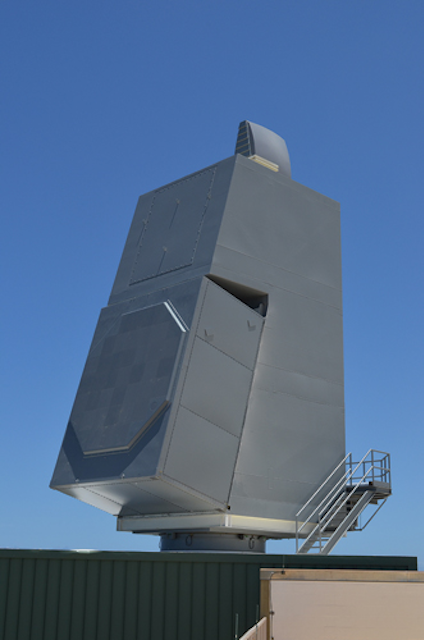
The SPY-6 Air and Missile Defense Radar (AMDR) will replace the SPY-1 aboard Flight III Burke-class destroyers for ballistic missile defense and integrated air-missile defense missions.
Unmanned Systems
The Navy is pursuing technologies that enable remotely operated tactical systems to increase lethality and reduce costs. Many unmanned airborne, surface, and undersea vehicles (UAVs, USVs, UUVs) already are in service, and the Navy and industry are testing even more capable systems.
In a huge step forward for unmanned systems, the Naval Air Systems Command last August awarded Boeing an $805 million engineering and manufacturing contract for design, development, production, testing, and delivery of four MQ-25A Stingray unmanned refueling aircraft. The award aims at operational capability by 2024. Boeing’s candidate, called the T-1, was developed by the company’s Phantom Works.
The Navy says the UAV refueler will dramatically extend the range of Navy fighter and attack aircraft. The MQ-25A must carry 14,000 pounds of fuel and refuel aircraft 500 miles from their carriers. Lockheed Martin and General Atomics also competed for the award.
Through late summer and early fall 2018, the Naval Undersea Warfare Center sponsored an Advanced Naval Technology Exercise, or ANTX, based on the theme, “Human-Machine Interaction (HMI).” More than 50 participants from industry, university, and Navy labs provided technology demonstrations. Many of the technologies focused on command and control for unmanned vehicles.
The LCS fleet is a primary target for new unmanned systems, especially for mine countermeasures (MCM). The Navy plans to acquire 24 MCM mission packages for the LCS, which will include several unmanned systems: an MCM USV, the WLD-1 remote minehunting vehicle, which will tow the Raytheon AQS-20 sonar; the MQ-8/B/C Fire Scout vertical takeoff UAV, which is equipped with a coastal battlefield reconnaissance and analysis payload (COBRA); and the Knifefish low-frequency sonar, an unmanned influence sweep system.
At ANTX, Northrop Grumman, builder of the Fire Scout, showed an advanced mission management control system for integration of command and control for unmanned systems. The company used a Bell 407 helicopter as a Fire Scout “surrogate” fitted out with sonobuoys.
The helicopter-look-alike Fire Scout “Charlie” is just over 41 feet long and 10 feet high, weighs 6,000 pounds with a full fuel load, and is able to carry a 500-pound internal payload or a 2,650-pound external (slinged) load.
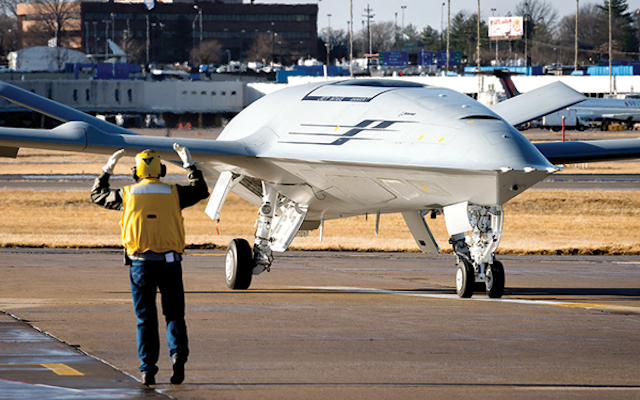
Boeing won the Navy’s hotly contested competition for the MQ-25a long-range carrier-based refueler UAV with its T-1 aircraft.
Unmanned helicopters
The helicopter-look-alike Fire Scout “Charlie” is able to carry a 500-pound internal payload or a 2,650-pound external (slinged) load. The vehicle is powered by a Rolls-Royce engine, allowing a maximum speed of 135 knots and endurance up to 12 hours. It can reach a ceiling of 16,000 feet.
In September Northrop Grumman started flight testing the MQ-8C at the company’s Moss Point, Miss., facility. The aircraft already has completed initial test and operational evaluation aboard Coronado (LCS-4).
ANTX demonstrated “swarming” technology, in several vehicles fitted with processors to operate in swarms. Aquabotix of Fall River, Mass., demonstrated Swarmdiver, a lightweight USV fitted with sensors and a processor that enables swarm operations at depths up to 150 feet.
In late July Raytheon won a $29.6 million research award from the Office of Naval Research for the low-cost UAV Swarming Technology (LOCUST) innovative Naval prototype. The LOCUST represents research on small UAVs that swarm to approach targets.
Northrop Grumman teamed for the ANTX with Physical Optics Corp., which builds mission data loaders and data transfer systems; Ultra Electronics, a designer and builder of sonobuoys; Hydroid Inc., a unit of Sweden’s Kongsberg, which manufactures marine robots; and Silvus, which develops mobile communications systems.
Kraken Robotic Systems of St. John’s, Newfoundland, teamed with ThayerMahan of Groton, Conn., for several ANTX demonstrations. Kraken showed off its SeaScout Expeditionary Seabed Mapping and Intelligence System.
Kraken says the SeaScout is fitted with an “intelligent” winch called Tentacle that allows dynamic manual, semi-autonomous, or full autonomous control of payloads. Tentacle can operate by itself or with an autonomous launch and recovery system for manned or unmanned surface craft.
In September the Naval Surface Warfare Center’s Indian Head division awarded a contract to iRobot Defense Holdings of Chelmsford, Mass., for production and support for the Man-Transportable Robotic System Mk1 program.
In June, Six3 Advanced Systems of Dulles, Va., won a $48.6 million NAVAIR award for installation and support for the AIRWORKS Rapid
Development Product Team supporting new “counter” UAVs for defense of sensitive government sites. The work is for modeling, simulation, and command and control integration. Also last year, Northrop Grumman won five NAVAIR contracts for low-rate initial production and support for the MQ-4C Triton reconnaissance UAV.
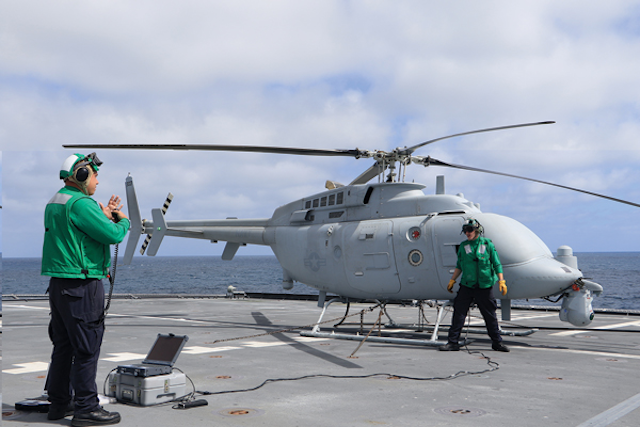
Crewmen aboard the littoral combat ship USS Coronado prepare the MQ-8C Fire Scout UAV for launch in operational testing in June 2018.
Ballistic missile defense
The highest-profile upgrade for the Flight III Arleigh Burke destroyers is the Raytheon-built SPY-6(v)1 air and missile defense radar or AMDR, which will replace the SPY-1 radar built in several versions since the 1980s by Lockheed Martin and installed on the Ticonderoga-class (CG-47) cruisers and all the Burke destroyers now in service.
Other Flight III improvements are more powerful air-conditioning units needed for the SPY-6(v)1; new gas turbine generators, new transformers, power conversional modules, switchgear, and new machinery control system controls.
The SPY-6(v)1 will employ a four-face S-band radar for volume search. An X-band horizon-search capability will be provided by the Northrop Grumman SPQ-9B air-search radar for the first 12 Flight III ships. The SPY-6(v)1 will use a radar suite controller for S- and X-band radar coordination and interface with baseline 10 of the Aegis combat system, now being developed by Lockheed Martin.
Raytheon and Navy officials say that the SPY-6(v)1, will be capable of surveilling twice the range of the SPY-1 for the integrated air and missile defense (IAMD) and ballistic missile defense (BMD) missions.
In December the Navy and the Missile Defense Agency tested the “engage on remote” capability of the Aegis combat system, using Aegis software that will be employed from the Aegis Ashore sites in Poland and Romania against intermediate-range ballistic missiles (IRBMs).
For the test, designated FTI-03, conducted at the Pacific Missile Range Facility, Kauai, Hawaii, the Aegis system, running the baseline software program 9.B2.0, tracked an IRBM target launched from an aircraft thousands of miles away. Aegis cued the launch of an SM-3 Block 2A missile, which intercepted the target.
The FTI-03 demonstration followed an October test, called FTM-45, carried out from John Finn (DDG-113). The ship’s Aegis system, running baseline 9.C2, directed the remote launch of an SM-3 block 2A to intercept a medium-range ballistic missile target.
MDA and Navy officials say that the “engage on remote” sequence uses only data provided by remote sensors; the launching platform never views the target. Engage on remote is an advanced beyond “launch on remote,” wherein the launch site uses offboard data for the launch but relies on its own radar to lock onto the target during its terminal approach.
The Navy and MDA programs use versions of Aegis baseline 9, designated MDA baseline 5.1. The 9.B MDA program is used solely for Aegis Ashore. The Navy baseline 9.C provides BMD but also controls the ship’s anti-surface, anti-submarine, and anti-air warfare missions for full-up IAMD.
The Flight III destroyers will move to the SPY-6(v)1, but the Aegis Ashore sites will use the SPY-1D(v) Aegis phased-array radar. The Aegis Ashore Romania site became operational in May 2016, using Aegis baseline 9.B1. The Poland site is set to be operational this year and will use Aegis baseline 9.B2.
Under the current plan, 11 of the Navy’s 22 Ticonderoga-class cruisers will get some level of modernization. The entire Burke class will be configured for full-up BMD/IAMD capability.
Shipboard weapons
The Navy last year started other ambitious programs to uparm the fleet. In May, Raytheon, teamed with Kongsberg Defense of Norway, won a $14.8 million award for an over-the-horizon weapon (OTH-W) system for littoral combat ships and the FFG(X). The team will provide Kongsberg’s Naval Strike Missile (NSM) to meet the requirement.
Raytheon is prime contractor for the Navy’s SM-2 anti-air defense missile, SM-3 and SM-6 ballistic missile defense weapons, evolved Seasparrow, and Tomahawk long-range cruise missile, as well as the RIM-116 rolling airframe missile (RAM) and SeaRAM shipboard terminal defense systems.
The NSM is fitted with an advanced seeker, emits a minimal radar signature, and is capable of sea-skimming, terrain-following, and evasive maneuvers to meet the requirement of destroying targets out to 100 nautical miles.
Raytheon will build NSM launchers at its Louisville, Ky., facility and carry out integration and final assembly at its Tucson, Ariz., plant.
The Navy also has funded Raytheon to upgrade the Mk 15 Phalanx terminal defense close-in weapon system, Evolved Seasparrow Missile (ESSM), SM-2, SM-3, SM-6 missiles, and the Tomahawk cruise missile.
The Mk 15 is a 20-millimeter Gatling-gun for use against approaching anti-ship missiles. Raytheon will introduce an electric gun drive to replace the long-used pneumatic drive, and add new technology for the local and remote control stations.
The company is adding new control software for the RAM, creating an enhanced Block 2A variant. The RAM is aboard carriers and amphibious ships and the Freedom littoral combat ships.
The ESSM is a medium-range ship self-defense missile capable of interdicting high-speed, low-altitude missiles. Raytheon will transition the missile to a dual-mode active/semi-active seeker with an IOC of 2021.
The SM-2 area air-defense missile, now fielded in Block 3A and 3B variants, will be upgraded to a Block 3C with addition of the new active/semi-active seeker, to reach IOC this year or in 2020.
The Navy is in a multi-year procurement for the SM-6 missile, capable of anti-air warfare, surface-to-surface attack, and sea-based terminal BMD. SM-6 Block 1A introduces guidance section improvements and completed land-based testing in June 2017.
Upgraded Tomahawk missiles
The Navy is upgrading the current Tomahawk Block 4 in three variants. The first upgrade modernizes the entire Tomahawk inventory by adding a new navigation system and more powerful radio.
In August 2017 the Navy awarded Raytheon a contract to convert several missiles to maritime strike Tomahawks (MSTs) by fitting them with a multi-mode seeker that will enable it to target ships underway.
The MST is set to reach IOC in 2021. Remaining missiles will be modified as joint multi-effects Tomahawks (JMEWS) for attack on hardened targets and area targets. The JMEWS variant will reach IOC in 2022.
Lockheed Martin has invested in the integration of a long-range anti-ship missile (LRASM) with the Navy’s Mk 41 vertical launch system, which is installed on Ticonderoga-class cruisers and Burke-class destroyers. The company also has invested in a topside launcher to launch the LRASM from ships not fitted with the Mk 41.
In 2008 the Defense Advanced Research Projects Agency funded the company to modify the joint air-to-surface standoff missile-extended range (JASSM-ER) in two variants: a surface-to-surface variant called LRASM A; and a supersonic variant, which ended in 2010.
The company added new sensors and made structural changes needed for launch from the Mk 41. The missile is scheduled to be operational for the Navy’s F/A-18E/F Super Hornet aircraft this year. In addition to the cruisers and destroyers, Raytheon sees a requirement for the LRASM for the FFG(X).
Raytheon won Navy contracts to support the USG-2/3 cooperative engagement capability (CEC), which it has built for many years. A November award for $33.8 million is for common array block antenna pre-production antenna. A $61.9 million award in September modifies an earlier award for CEC design agent and engineering services.
The CEC is integrated with the Aegis combat system aboard cruisers, destroyers, and carriers. It uses an advanced processor to distribute sensor data among a network of CEC-equipped ships, such that all ships see the same “netted” sensor threat picture.
In July, DRS Laurel Technologies in Johnstown, Pa., won a $9.6 million award for an option for production of CEC signal processor equipment (SDP-S) sets. Then in August $8.7 million NAVSEA contract for production of CEC equipment sets.
Northrop Grumman, General Dynamics Mission Systems, and Lockheed Martin all won work on the Navy’s long-running surface ship electronic warfare improvement program or SEWIP, an evolutionary transformation of the Navy’s obsolescent SLQ-32(v) EW system, in service aboard nearly all surface ships. In September Northrop received a $9 million modification for long-lead material for SEWIP Block 1 low-rate initial production.
That same month Lockheed Martin was awarded $14.7 million for SLQ-32(v)6 engineering services. In May General Dynamics won a $9.7 million contract for SEWIP Block 1B full-rate production, which includes risk reduction and special signals intercept.
Hull, mechanical, electrical
General Electric’s Marine Solutions business group plans to propose for the FFG(X) a variant of its workhorse LM2500 engine integrated with a carbon-fiber composite enclosure module. The new enclosure module has been tested extensively as a lightweight alternative to the steel enclosure now used for the engine.
The company, working with the Navy and Bath Iron Works, finished acoustic attenuation testing of the composite module, which will house the engine. The analysis projected that the new composite module would reduce engine noise by 60 percent and weight by about 5,500 pounds.
GE and the Navy’s Electric Ship Program Office have discussed potential ways to use GE technology to produce a “power-dense” 25-megawatt gas turbine generator, using advanced power electronics to meet pulse-load needs. GE’s Power Conversion business unit also is working with ONR on development of the hybrid energy storage module, which would be part of the IPES architecture.
In December, DRS Power & Control Technologies received a $13.3 million modification to a contract for low-rate initial production of 12 shipsets of DDG-51 power conversion modules for the SPY-6(v)1 AMDR. The PCMs convert, regulate, troubleshoot, and flow power to the AMDR from the ship’s service power system.
In May 2018 Philadelphia Gear Corp. won a contract valued at $70.8 million for two main reduction gear shipsets for Burke destroyers. Each shipset transmits power from the ship’s LM2500 propulsion engines to the shafts. The two shipsets purchased are for Flight III ships Ted Stevens (DDG-128) and Scott (DDG-129). The work is expected to be complete by November 2020.
That same month Lockheed Martin’s Baltimore unit won an $11.7 million award for common machinery control system consoles for the Burke destroyer’s new construction program and midlife modernization. The control system monitors the ship’s auxiliary, damage control, electrical, and propulsion systems, and interfaces with the ship’s power generation and distribution system.
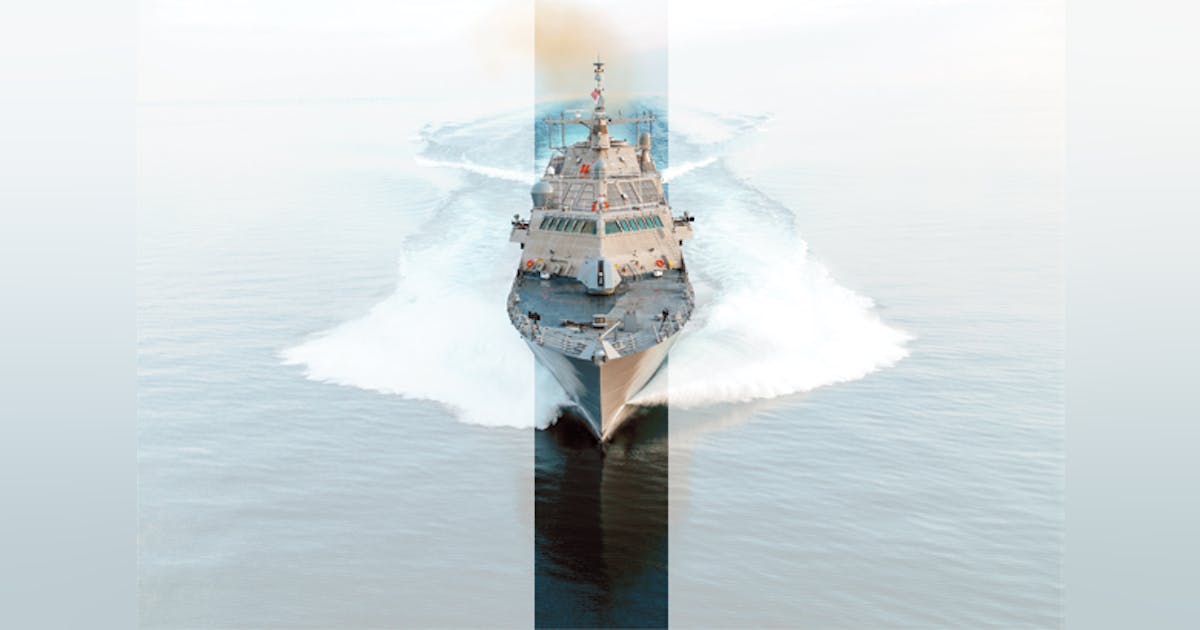
 www.militaryaerospace.com
www.militaryaerospace.com
Shipboard electronics use to be about power, navigation, and communications aboard surface warships; now it’s about unmanned systems, futuristic weapons, and ocean networking.
Mar 1st, 2019

Shipboard electronics use to be about power, navigation, and communications aboard surface warships; now it’s about unmanned systems, futuristic weapons, and ocean networking.By Edward J. Walsh
The U.S. Navy in 2019 is facing growing threats in the Western Pacific, Southwest Asia, and the Eastern Mediterranean — even as the Trump administration seeks to reduce U.S. military commitments overseas. To confront increasingly aggressive naval activity by China and Russia, the Navy, with strong congressional support, is pushing to increase the size of its surface fleet to 355 ships. In early 2019 the fleet had about 290 deployable surface warships.
Last October former Australian Prime Minister Kevin Rudd declared that “China intends to push the U.S. out of East Asia and the Western Pacific, and intime to surpass the U.S. as the dominant global economic power.”
Speaking then at the New China Challenge conference hosted by the U.S. Naval Institute in Annapolis, Md., Rudd said that “China hopes to achieve its national and international dominance through the hollowing-out of U.S. domestic manufacturing and technology by means of state-directed industry ... through the rapid expansion of China’s military and naval presence from the East China Sea ... and across the littoral states of the Indian Ocean and Djibouti in the Red Sea.”
He added that “these factors, along with Russia, combine to form the central strategic challenge to U.S. security and prosperity for the future.”
Chief of Naval Operations Adm. John Richardson, in his White Paper “A Design for Maintaining Maritime Dominance 2.0,” released in December, points out that “China and Russia are deploying all elements of their national power to achieve their global ambitions. ... In many cases, they are gaining a competitive advantage and exploiting our vulnerabilities ... China and Russia seek to accumulate power at America’s expense.”
In January Richardson met with his Chinese navy counterpart Vice Adm. Shen Jinlong in Beijing to discuss ways of reducing tensions at sea — particularly China’s claim to the entire South China Sea.
The friendly relationship between the U.S. and Taiwan remains a sore point for China. The Pentagon has accused China of staging offensive weapons, including anti-ship and surface-to-air missiles, in and around the Spratly Islands, which China also claims. In 2018, citing tensions, the U.S. excluded the Chinese navy from participating in the biannual RIMPAC exercise. China did take part in 2014 and 2016.
The Navy announced the new 355-ship goal in December 2016 — a goal which the congressional fiscal year 2018 National Defense Authorization Act endorsed “as soon as practicable,” subject to available funding.

The Navy plans three Arleigh Burke class destroyers in its current budget, to be built to the new Flight III design.
Push for shipbuilding
The Navy’s 2019 budget would pay for 10 new ships: two Virginia-class attack submarines; three Arleigh Burke-class Aegis destroyers; one littoral combat ship (LCS); two oilers; one expeditionary sea base ship; and one salvage and rescue ship.
The current five-year shipbuilding plan seeks to build 54 new ships — 11 more than the 43 sought for fiscal year budgets 2019 to 2024 in the 2018 budget submission. These are four Burke-class destroyers, three oilers, two expeditionary sea base ships, one salvage-rescue ship, and one ocean surveillance ship.
The Navy has moved forward smartly on shipbuilding. In late September last year, it awarded a $5.1 billion contract to Huntington Ingalls Industries in Newport News, Va., for six Burke destroyers and a $3.9 billion contract to General Dynamics Bath Iron Works in Bath, Maine, for four more destroyers. These ships will be built to a Flight III design — a bow-to-stern package of new weapons and sensors, machinery controls, and hull, mechanical, and electrical upgrades.
These awards follow the long-anticipated Navy announcement that the first Flight III ships will be Jack H. Lucas (DDG-125) and Louis H. Wilson Jr. (DDG-126), to be built by Huntington Ingalls and Bath Iron Works respectively. Huntington won the Lucas contract in June 2017 and Bath Iron Works received the Wilson award in September of that year. Sixty-six Burkes of the earlier Flights I, II, and IIA designs now are in service. Patrick Gallagher (DDG-127), under construction at Bath Iron Works, will be a Flight IIA ship.
Last July the Navy awarded contract modifications — all in the $7 million to $8 million range — already awarded to Huntington Ingalls, Austal USA in Mobile, Ala., and General Dynamics Bath Iron Works; as well as the Lockheed Martin-Marinette Marine Corp. team in Marinette, Wis. — for concept designs for a new guided-missile frigate or FFG(X).
The Navy says the FFG(X) design work, to be completed this June, will guide final specifications to be used in the request for proposals for detail design and construction for the FFG(X). The Navy plans a construction award in 2020.
The FFG(X) program was initiated to counter widespread criticism that the Navy’s littoral combat ships are too lightly armed and vulnerable to enemy missiles. The littoral combat ships were conceived as light, high-speed ships that will use specialized mission packages to conduct anti-surface and anti-submarine warfare, and mine countermeasures.
Littoral combat ships
Lockheed Martin and Fincantieri Marinette Marine are teamed on the Freedom-class (LCS-1) variant of the LCS (odd hull numbers); Austal USA and Bath Iron Works build the Independence variant (LCS-2, even hull numbers). Thirteen littoral combat ships of both variants now are in service — six Freedom ships and seven Independence ships. Austal is building six littoral combat ships, with three more under contract. Seven Freedom-type ships are under construction at Fincantieri Marinette Marine.
The FFG(X) will be a well-armed, well-defended ship. In its request for information from industry in July 2017, the Navy cited many of the systems required, including the Component-Based Total-Ship System – 21st Century (COMBATSS-21) combat management system; SeaRAM anti-ship missile defense system; Mk 53 Nulka decoy launch system; SQS-62 variable-depth sonar; and Mk 110 57-millimeter gun.
Several new ships went to sea, started construction, and were placed on contract in the past year. The Navy commissioned Ralph Johnson (DDG-114) in Charleston, S.C., last March. Thomas Hudner (DDG-116), the 66th Burke-class ship and the 36th built by Bath Iron Works, was commissioned in Boston in December. Frank E. Peterson Jr. (DDG-121) was christened in October at the Huntington Ingalls yard in Pascagoula, Miss.
Also in December, Bath Iron Works launched Lyndon B. Johnson (DDG-1002), the third and last-of-class Zumwalt-class (DDG-1000) destroyer. The Zumwalt class ships are notable for their “tumblehome” hull and integrated electric drive propulsion. The Zumwalts are heavily armed for land- and surface-attack. Zumwalt and Michael Monsoor (DDG-1001) already are in the fleet.
In May the Navy commissioned Manchester (LCS-14), the 12th LCS to join the fleet and seventh Independence ship. Manchester will homeport in San Diego with LCS Squadron 1. Sioux City (LCS-11) was commissioned in May as the sixth Freedom ship and 13th LCS in the fleet. The ship joins LCS Squadron 2, homeporting in Mayport, Fla. The Navy accepted delivery of Tulsa (LCS-16) in April; delivery is the last step before commissioning.
Indianapolis (LCS-17) was christened in April in Marinette, Wis. Cincinnati (LCS-20) was christened in May, and Kansas City (LCS-22) was christened in September — both in Mobile, Ala.

The SPY-6 Air and Missile Defense Radar (AMDR) will replace the SPY-1 aboard Flight III Burke-class destroyers for ballistic missile defense and integrated air-missile defense missions.
Unmanned Systems
The Navy is pursuing technologies that enable remotely operated tactical systems to increase lethality and reduce costs. Many unmanned airborne, surface, and undersea vehicles (UAVs, USVs, UUVs) already are in service, and the Navy and industry are testing even more capable systems.
In a huge step forward for unmanned systems, the Naval Air Systems Command last August awarded Boeing an $805 million engineering and manufacturing contract for design, development, production, testing, and delivery of four MQ-25A Stingray unmanned refueling aircraft. The award aims at operational capability by 2024. Boeing’s candidate, called the T-1, was developed by the company’s Phantom Works.
The Navy says the UAV refueler will dramatically extend the range of Navy fighter and attack aircraft. The MQ-25A must carry 14,000 pounds of fuel and refuel aircraft 500 miles from their carriers. Lockheed Martin and General Atomics also competed for the award.
Through late summer and early fall 2018, the Naval Undersea Warfare Center sponsored an Advanced Naval Technology Exercise, or ANTX, based on the theme, “Human-Machine Interaction (HMI).” More than 50 participants from industry, university, and Navy labs provided technology demonstrations. Many of the technologies focused on command and control for unmanned vehicles.
The LCS fleet is a primary target for new unmanned systems, especially for mine countermeasures (MCM). The Navy plans to acquire 24 MCM mission packages for the LCS, which will include several unmanned systems: an MCM USV, the WLD-1 remote minehunting vehicle, which will tow the Raytheon AQS-20 sonar; the MQ-8/B/C Fire Scout vertical takeoff UAV, which is equipped with a coastal battlefield reconnaissance and analysis payload (COBRA); and the Knifefish low-frequency sonar, an unmanned influence sweep system.
At ANTX, Northrop Grumman, builder of the Fire Scout, showed an advanced mission management control system for integration of command and control for unmanned systems. The company used a Bell 407 helicopter as a Fire Scout “surrogate” fitted out with sonobuoys.
The helicopter-look-alike Fire Scout “Charlie” is just over 41 feet long and 10 feet high, weighs 6,000 pounds with a full fuel load, and is able to carry a 500-pound internal payload or a 2,650-pound external (slinged) load.

Boeing won the Navy’s hotly contested competition for the MQ-25a long-range carrier-based refueler UAV with its T-1 aircraft.
Unmanned helicopters
The helicopter-look-alike Fire Scout “Charlie” is able to carry a 500-pound internal payload or a 2,650-pound external (slinged) load. The vehicle is powered by a Rolls-Royce engine, allowing a maximum speed of 135 knots and endurance up to 12 hours. It can reach a ceiling of 16,000 feet.
In September Northrop Grumman started flight testing the MQ-8C at the company’s Moss Point, Miss., facility. The aircraft already has completed initial test and operational evaluation aboard Coronado (LCS-4).
ANTX demonstrated “swarming” technology, in several vehicles fitted with processors to operate in swarms. Aquabotix of Fall River, Mass., demonstrated Swarmdiver, a lightweight USV fitted with sensors and a processor that enables swarm operations at depths up to 150 feet.
In late July Raytheon won a $29.6 million research award from the Office of Naval Research for the low-cost UAV Swarming Technology (LOCUST) innovative Naval prototype. The LOCUST represents research on small UAVs that swarm to approach targets.
Northrop Grumman teamed for the ANTX with Physical Optics Corp., which builds mission data loaders and data transfer systems; Ultra Electronics, a designer and builder of sonobuoys; Hydroid Inc., a unit of Sweden’s Kongsberg, which manufactures marine robots; and Silvus, which develops mobile communications systems.
Kraken Robotic Systems of St. John’s, Newfoundland, teamed with ThayerMahan of Groton, Conn., for several ANTX demonstrations. Kraken showed off its SeaScout Expeditionary Seabed Mapping and Intelligence System.
Kraken says the SeaScout is fitted with an “intelligent” winch called Tentacle that allows dynamic manual, semi-autonomous, or full autonomous control of payloads. Tentacle can operate by itself or with an autonomous launch and recovery system for manned or unmanned surface craft.
In September the Naval Surface Warfare Center’s Indian Head division awarded a contract to iRobot Defense Holdings of Chelmsford, Mass., for production and support for the Man-Transportable Robotic System Mk1 program.
In June, Six3 Advanced Systems of Dulles, Va., won a $48.6 million NAVAIR award for installation and support for the AIRWORKS Rapid
Development Product Team supporting new “counter” UAVs for defense of sensitive government sites. The work is for modeling, simulation, and command and control integration. Also last year, Northrop Grumman won five NAVAIR contracts for low-rate initial production and support for the MQ-4C Triton reconnaissance UAV.

Crewmen aboard the littoral combat ship USS Coronado prepare the MQ-8C Fire Scout UAV for launch in operational testing in June 2018.
Ballistic missile defense
The highest-profile upgrade for the Flight III Arleigh Burke destroyers is the Raytheon-built SPY-6(v)1 air and missile defense radar or AMDR, which will replace the SPY-1 radar built in several versions since the 1980s by Lockheed Martin and installed on the Ticonderoga-class (CG-47) cruisers and all the Burke destroyers now in service.
Other Flight III improvements are more powerful air-conditioning units needed for the SPY-6(v)1; new gas turbine generators, new transformers, power conversional modules, switchgear, and new machinery control system controls.
The SPY-6(v)1 will employ a four-face S-band radar for volume search. An X-band horizon-search capability will be provided by the Northrop Grumman SPQ-9B air-search radar for the first 12 Flight III ships. The SPY-6(v)1 will use a radar suite controller for S- and X-band radar coordination and interface with baseline 10 of the Aegis combat system, now being developed by Lockheed Martin.
Raytheon and Navy officials say that the SPY-6(v)1, will be capable of surveilling twice the range of the SPY-1 for the integrated air and missile defense (IAMD) and ballistic missile defense (BMD) missions.
In December the Navy and the Missile Defense Agency tested the “engage on remote” capability of the Aegis combat system, using Aegis software that will be employed from the Aegis Ashore sites in Poland and Romania against intermediate-range ballistic missiles (IRBMs).
For the test, designated FTI-03, conducted at the Pacific Missile Range Facility, Kauai, Hawaii, the Aegis system, running the baseline software program 9.B2.0, tracked an IRBM target launched from an aircraft thousands of miles away. Aegis cued the launch of an SM-3 Block 2A missile, which intercepted the target.
The FTI-03 demonstration followed an October test, called FTM-45, carried out from John Finn (DDG-113). The ship’s Aegis system, running baseline 9.C2, directed the remote launch of an SM-3 block 2A to intercept a medium-range ballistic missile target.
MDA and Navy officials say that the “engage on remote” sequence uses only data provided by remote sensors; the launching platform never views the target. Engage on remote is an advanced beyond “launch on remote,” wherein the launch site uses offboard data for the launch but relies on its own radar to lock onto the target during its terminal approach.
The Navy and MDA programs use versions of Aegis baseline 9, designated MDA baseline 5.1. The 9.B MDA program is used solely for Aegis Ashore. The Navy baseline 9.C provides BMD but also controls the ship’s anti-surface, anti-submarine, and anti-air warfare missions for full-up IAMD.
The Flight III destroyers will move to the SPY-6(v)1, but the Aegis Ashore sites will use the SPY-1D(v) Aegis phased-array radar. The Aegis Ashore Romania site became operational in May 2016, using Aegis baseline 9.B1. The Poland site is set to be operational this year and will use Aegis baseline 9.B2.
Under the current plan, 11 of the Navy’s 22 Ticonderoga-class cruisers will get some level of modernization. The entire Burke class will be configured for full-up BMD/IAMD capability.
Shipboard weapons
The Navy last year started other ambitious programs to uparm the fleet. In May, Raytheon, teamed with Kongsberg Defense of Norway, won a $14.8 million award for an over-the-horizon weapon (OTH-W) system for littoral combat ships and the FFG(X). The team will provide Kongsberg’s Naval Strike Missile (NSM) to meet the requirement.
Raytheon is prime contractor for the Navy’s SM-2 anti-air defense missile, SM-3 and SM-6 ballistic missile defense weapons, evolved Seasparrow, and Tomahawk long-range cruise missile, as well as the RIM-116 rolling airframe missile (RAM) and SeaRAM shipboard terminal defense systems.
The NSM is fitted with an advanced seeker, emits a minimal radar signature, and is capable of sea-skimming, terrain-following, and evasive maneuvers to meet the requirement of destroying targets out to 100 nautical miles.
Raytheon will build NSM launchers at its Louisville, Ky., facility and carry out integration and final assembly at its Tucson, Ariz., plant.
The Navy also has funded Raytheon to upgrade the Mk 15 Phalanx terminal defense close-in weapon system, Evolved Seasparrow Missile (ESSM), SM-2, SM-3, SM-6 missiles, and the Tomahawk cruise missile.
The Mk 15 is a 20-millimeter Gatling-gun for use against approaching anti-ship missiles. Raytheon will introduce an electric gun drive to replace the long-used pneumatic drive, and add new technology for the local and remote control stations.
The company is adding new control software for the RAM, creating an enhanced Block 2A variant. The RAM is aboard carriers and amphibious ships and the Freedom littoral combat ships.
The ESSM is a medium-range ship self-defense missile capable of interdicting high-speed, low-altitude missiles. Raytheon will transition the missile to a dual-mode active/semi-active seeker with an IOC of 2021.
The SM-2 area air-defense missile, now fielded in Block 3A and 3B variants, will be upgraded to a Block 3C with addition of the new active/semi-active seeker, to reach IOC this year or in 2020.
The Navy is in a multi-year procurement for the SM-6 missile, capable of anti-air warfare, surface-to-surface attack, and sea-based terminal BMD. SM-6 Block 1A introduces guidance section improvements and completed land-based testing in June 2017.
Upgraded Tomahawk missiles
The Navy is upgrading the current Tomahawk Block 4 in three variants. The first upgrade modernizes the entire Tomahawk inventory by adding a new navigation system and more powerful radio.
In August 2017 the Navy awarded Raytheon a contract to convert several missiles to maritime strike Tomahawks (MSTs) by fitting them with a multi-mode seeker that will enable it to target ships underway.
The MST is set to reach IOC in 2021. Remaining missiles will be modified as joint multi-effects Tomahawks (JMEWS) for attack on hardened targets and area targets. The JMEWS variant will reach IOC in 2022.
Lockheed Martin has invested in the integration of a long-range anti-ship missile (LRASM) with the Navy’s Mk 41 vertical launch system, which is installed on Ticonderoga-class cruisers and Burke-class destroyers. The company also has invested in a topside launcher to launch the LRASM from ships not fitted with the Mk 41.
In 2008 the Defense Advanced Research Projects Agency funded the company to modify the joint air-to-surface standoff missile-extended range (JASSM-ER) in two variants: a surface-to-surface variant called LRASM A; and a supersonic variant, which ended in 2010.
The company added new sensors and made structural changes needed for launch from the Mk 41. The missile is scheduled to be operational for the Navy’s F/A-18E/F Super Hornet aircraft this year. In addition to the cruisers and destroyers, Raytheon sees a requirement for the LRASM for the FFG(X).
Raytheon won Navy contracts to support the USG-2/3 cooperative engagement capability (CEC), which it has built for many years. A November award for $33.8 million is for common array block antenna pre-production antenna. A $61.9 million award in September modifies an earlier award for CEC design agent and engineering services.
The CEC is integrated with the Aegis combat system aboard cruisers, destroyers, and carriers. It uses an advanced processor to distribute sensor data among a network of CEC-equipped ships, such that all ships see the same “netted” sensor threat picture.
In July, DRS Laurel Technologies in Johnstown, Pa., won a $9.6 million award for an option for production of CEC signal processor equipment (SDP-S) sets. Then in August $8.7 million NAVSEA contract for production of CEC equipment sets.
Northrop Grumman, General Dynamics Mission Systems, and Lockheed Martin all won work on the Navy’s long-running surface ship electronic warfare improvement program or SEWIP, an evolutionary transformation of the Navy’s obsolescent SLQ-32(v) EW system, in service aboard nearly all surface ships. In September Northrop received a $9 million modification for long-lead material for SEWIP Block 1 low-rate initial production.
That same month Lockheed Martin was awarded $14.7 million for SLQ-32(v)6 engineering services. In May General Dynamics won a $9.7 million contract for SEWIP Block 1B full-rate production, which includes risk reduction and special signals intercept.
Hull, mechanical, electrical
General Electric’s Marine Solutions business group plans to propose for the FFG(X) a variant of its workhorse LM2500 engine integrated with a carbon-fiber composite enclosure module. The new enclosure module has been tested extensively as a lightweight alternative to the steel enclosure now used for the engine.
The company, working with the Navy and Bath Iron Works, finished acoustic attenuation testing of the composite module, which will house the engine. The analysis projected that the new composite module would reduce engine noise by 60 percent and weight by about 5,500 pounds.
GE and the Navy’s Electric Ship Program Office have discussed potential ways to use GE technology to produce a “power-dense” 25-megawatt gas turbine generator, using advanced power electronics to meet pulse-load needs. GE’s Power Conversion business unit also is working with ONR on development of the hybrid energy storage module, which would be part of the IPES architecture.
In December, DRS Power & Control Technologies received a $13.3 million modification to a contract for low-rate initial production of 12 shipsets of DDG-51 power conversion modules for the SPY-6(v)1 AMDR. The PCMs convert, regulate, troubleshoot, and flow power to the AMDR from the ship’s service power system.
In May 2018 Philadelphia Gear Corp. won a contract valued at $70.8 million for two main reduction gear shipsets for Burke destroyers. Each shipset transmits power from the ship’s LM2500 propulsion engines to the shafts. The two shipsets purchased are for Flight III ships Ted Stevens (DDG-128) and Scott (DDG-129). The work is expected to be complete by November 2020.
That same month Lockheed Martin’s Baltimore unit won an $11.7 million award for common machinery control system consoles for the Burke destroyer’s new construction program and midlife modernization. The control system monitors the ship’s auxiliary, damage control, electrical, and propulsion systems, and interfaces with the ship’s power generation and distribution system.

Navy pushes shipboard unmanned systems, lethality upgrades
Shipboard electronics use to be about power, navigation, and communications aboard surface warships; now it’s about unmanned systems, futuristic weapons, and ocean networking....

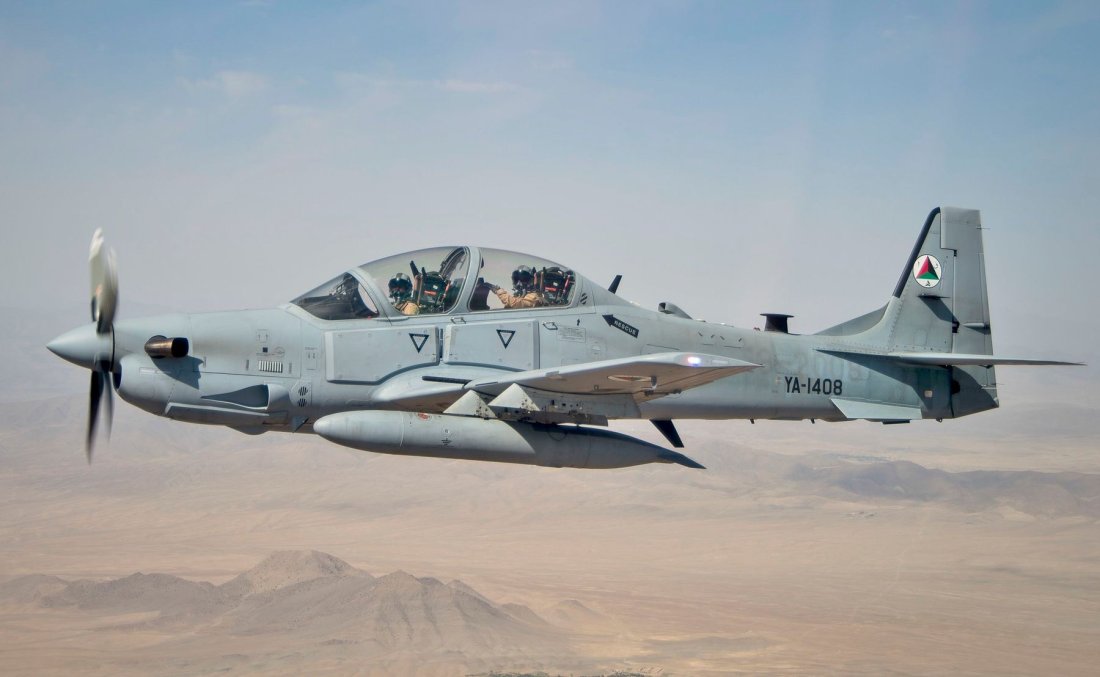

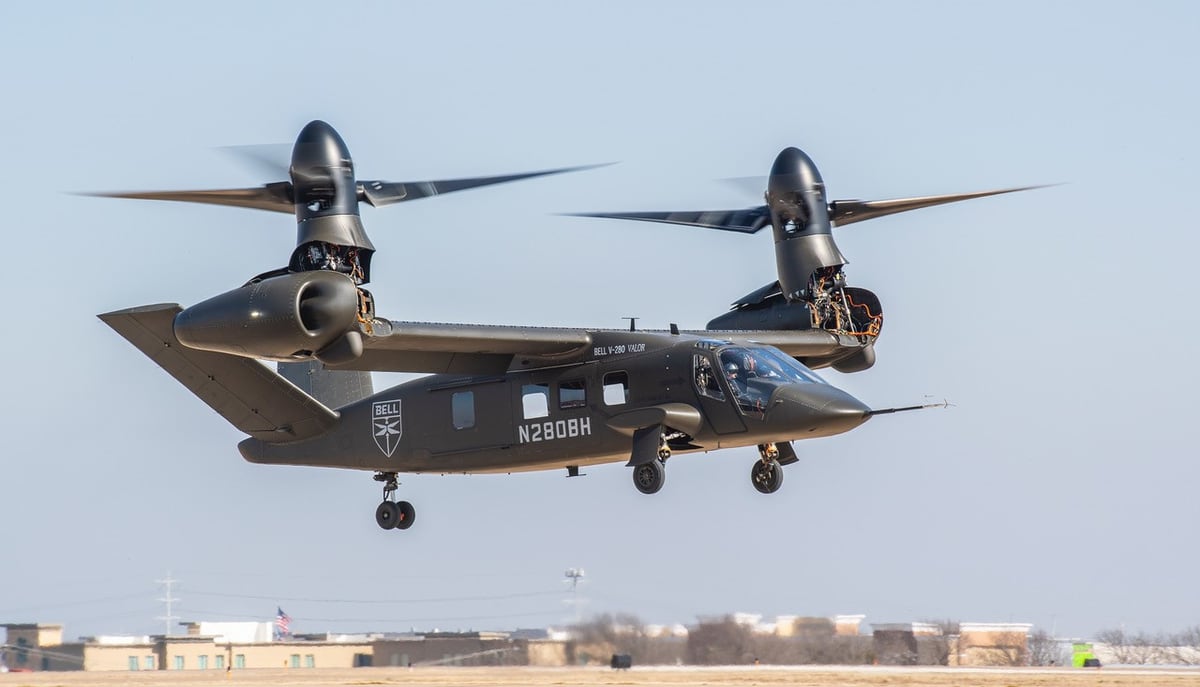

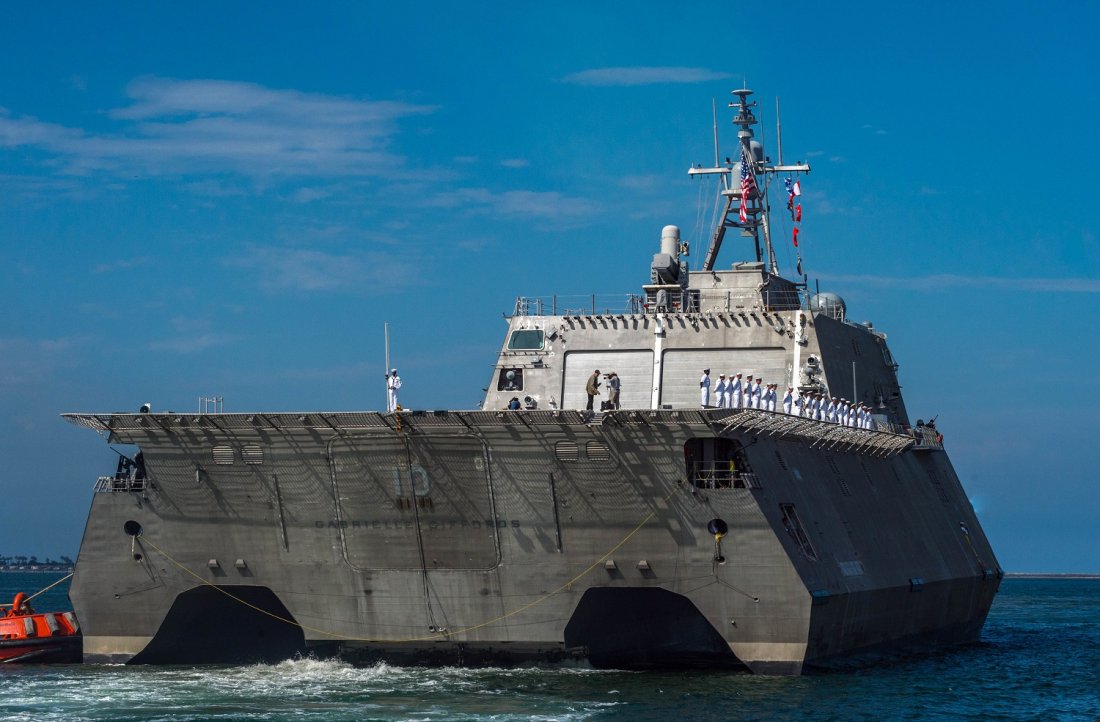

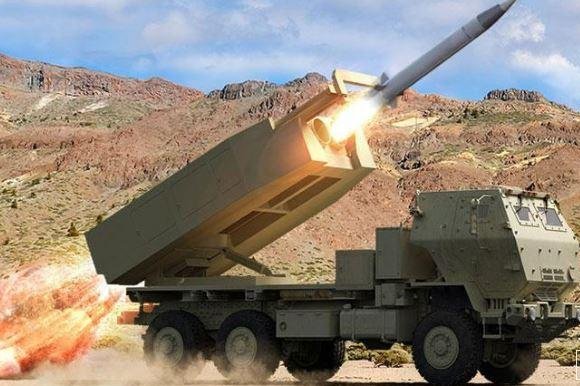
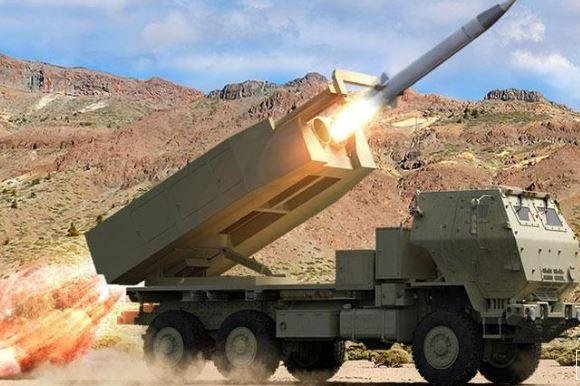
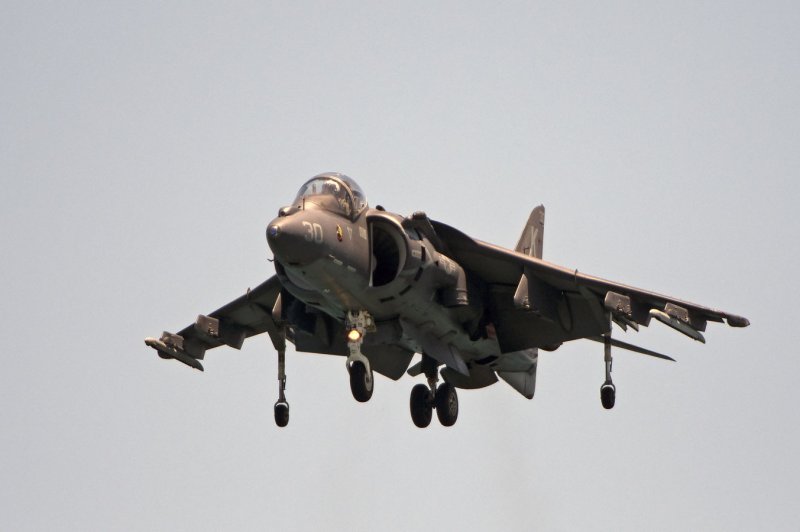
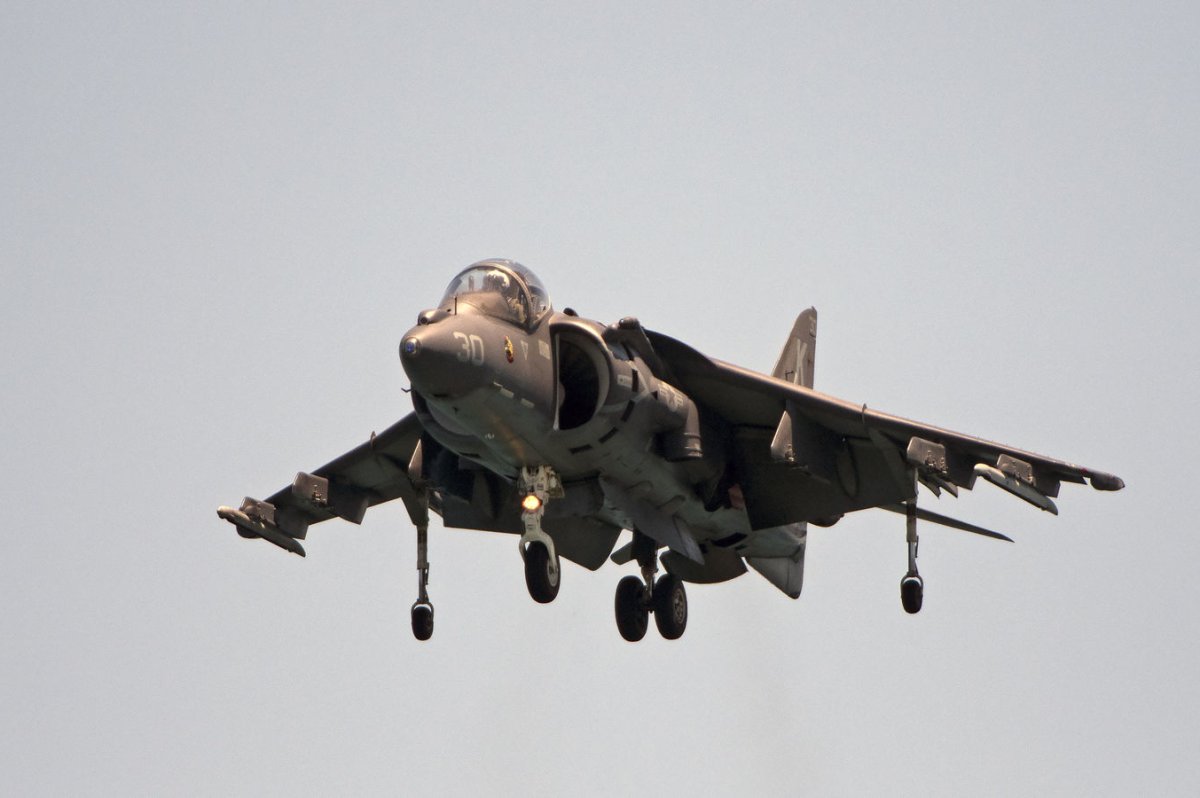
![[IMG] [IMG]](/proxy.php?image=https%3A%2F%2Fthumbor.forbes.com%2Fthumbor%2F960x0%2Fhttps%253A%252F%252Fblogs-images.forbes.com%252Florenthompson%252Ffiles%252F2019%252F05%252FLong_Range_Anti-Ship_Missile_LRASM_launches_from_an_Air_Force_B-1B_Lancer.jpg&hash=29e5f15c1a2571ca75b6e6a540d3a74d)
